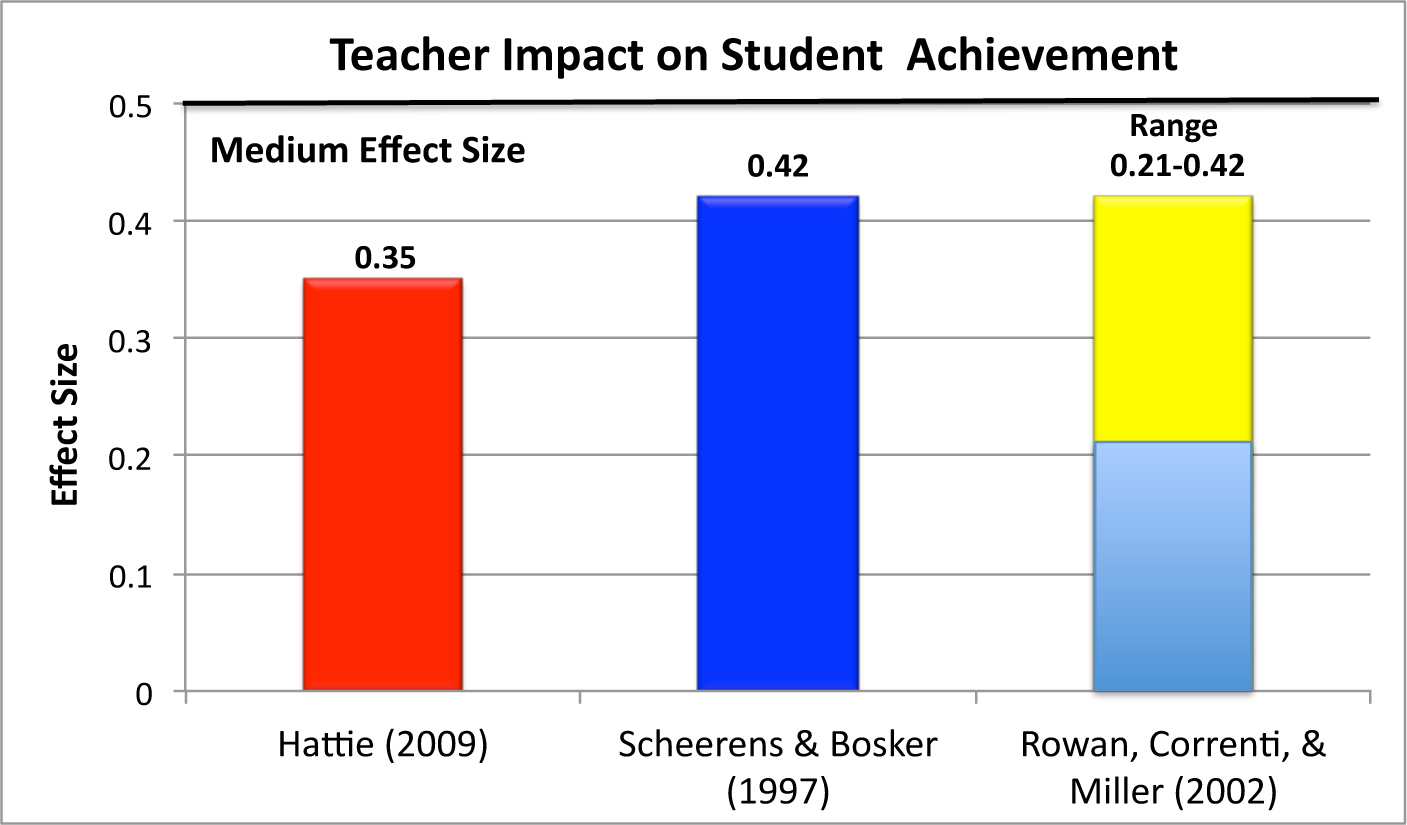What is a teacher's impact on student achievement?
Why is this question important? The relationship between teachers and student learning is the subject of much attention. No Child Left Behind and Race to the Top attempt to reform the American education system by improving the quality and performance of teachers. Some reformers promote the swift firing of poorly performing teachers as a way to improve student achievement, whereas others advocate improving teacher preparation as a means to improve teachers. At the core of these disparate reforms is the belief that teachers have a significant impact on learning. Given this fact, it is important that we first answer the question; do teachers actually make a significant difference in student learning?
See further discussion below.

Source:
Hattie, J. (2009) Visible learning: A synthesis of over 800 meta-analyses related to achievement. New York: Routledge.
Marzano, R. J., Waters, T., & McNulty, B. A. (2005). School leadership that works: From research to results. Association for Supervision and Curriculum Development. 1703 North Beauregard Street, Alexandria, VA 22311-1714.
Scheerens, J. & Bosker, R. (1997). The foundations of educational effectiveness. Oxford: Pergamon.
Rowan, B., Correnti, R., & Miller, R. (2002). What large-scale survey research tells us about teacher effects on student achievement: Insights from the Prospects study of elementary schools. The Teachers College Record, 104(8), 1525–1567.
Results: All three of these studies confirm the commonly held belief that the specific teacher a child has directly impacts on how well the child does on high-stake tests. Hattie derives an effect size of 0.35. Scheerens and Bosker calculate an even larger effect of 0.42. Rowan, Correnti, and Miller provide an effect size range of between 0.21 to 0.42, depending on grade level and the subject matter being taught.
Implications: These results mean that not only do teachers have an impact, but that this impact is powerful when compared with other factors in a school and provides justification for further investment in enhancing teacher quality and skills (Marzano, Waters, & McNulty, 2005).
Study Description: The three studies included in this analysis were meta-analyses of a body of research to arrive at the effect size (Cohen's d) for the measure of a teacher's influence on student achievement.
Definitions: Cohen's d: a statistical measure that is the difference between two means divided by a standard deviation for the data.
